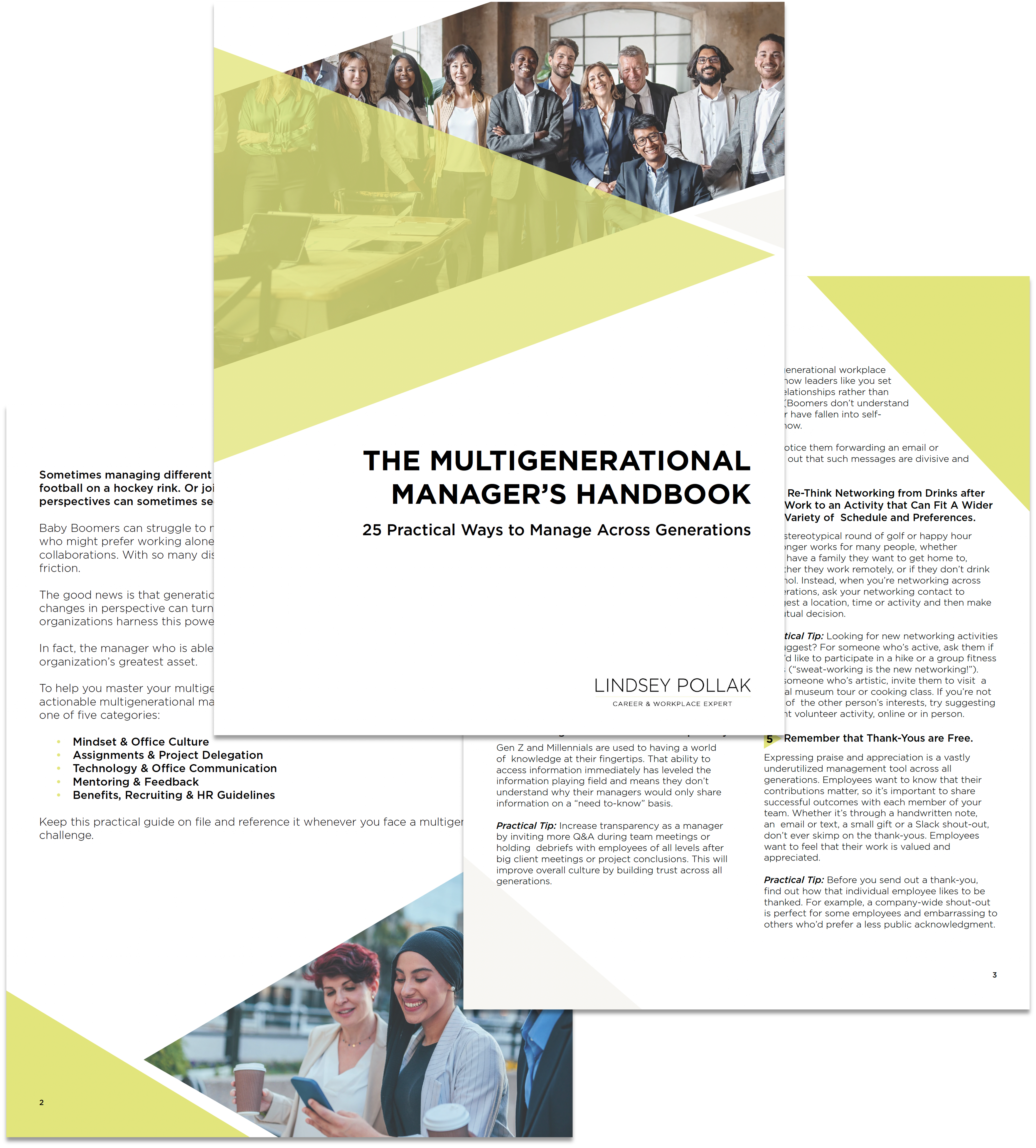Remember being stuck at the kids’ table at family gatherings? In some ways, it was fun to be able to kick back with the cousins and avoid probing questions from relatives you barely knew about whether you had a boyfriend or what “hooking up” meant. (Or maybe that was just my family…)
But, in a way, you also felt as though you were being segregated just for being a kid. Like you didn’t have anything to add to the grownup conversation.
Somewhat oddly, the kids’ table trend is now popping up in U.S. workplaces — to describe corralling entry-level millennial workers in their own area. One example is this article in the Wall Street Journal about Grey Global Group. The company uses a “basecamp” approach for assistant account executives, where they work in a separate space especially designed for them. As my friend Jodi Glickman pointed out to me, it’s a model similar to the “bullpens” investment banks have been using for years.
But whether you call it a bullpen, basecamp or the kids’ table, this concept raises an important question: Do millennials learn what they need to know when they’re segregated on the job?
With that in mind, let’s think through the benefits of seating different generations together.
It forces better management.
On one hand, I like the camaraderie and peer support of a millennial-only workspace; after all, you are bound to feel more at ease with those who are also learning on the job. There are no dumb questions and everyone speaks your language. But if you’re always speaking the same language, how can you learn a new one?
In the Grey example, the millennials were separated in part because they were bothering more tenured colleagues with constant questions. But that’s an issue that can be overcome by management, not just real estate. Of course, seasoned managers want to get their work done without incessant interruptions, but surely there can be a system in place where questions can be answered at a set time. Turning to a colleague before a manager is a great strategy, but that doesn’t have to be dictated by where your desk is.
It fosters informal mentoring.
Gen X managers’ tales of having to replace the curly fax paper are the equivalent of Uncle Bob’s stories of walking to school in the snow — uphill both ways! But, those stories come with important gems that millennials can mine. Hearing about how a manager navigated a tricky situation (or moved past their biggest work fail) can be a great lesson in what to do — or what not to do. It can be inspiring to hear how they climbed the ladder, and comforting to hear that they once were new, too. These conversations are more likely to take place in a casual, mixed atmosphere.
It allows for learning through listening.
One of my first jobs was helping solicit donations at a nonprofit. My manager understood that no one just intuitively knows how to make these fundraising calls, so she invited me to listen in and take notes on her process. I noticed how she changed her approach based on a donor’s history with the group and her own personal relationship with each contact. It was a great lesson in how one size never fits all in sales, and one I wouldn’t have learned as quickly if she had just turned me loose, or even had me listen in on another junior colleague’s calls.
It increases diversity.
Today’s workplace is a hive of diversity — from gender and ethnicity to sexual orientation — and with good reason! I’m generally in favor of the most diversity possible, especially since studies show that better ideas come from more diverse viewpoints. And that includes age. Blending different age groups allows for a mix of ideas that will lead to better outcomes.
The bottom line
For some workplaces and in some cases, millennial sequestering might make sense. But before you consider it for your office or team, think about the learning and development that might be lost in the process.
Readers, what’s your workplace like? Do you separate by age or would you consider doing so?

